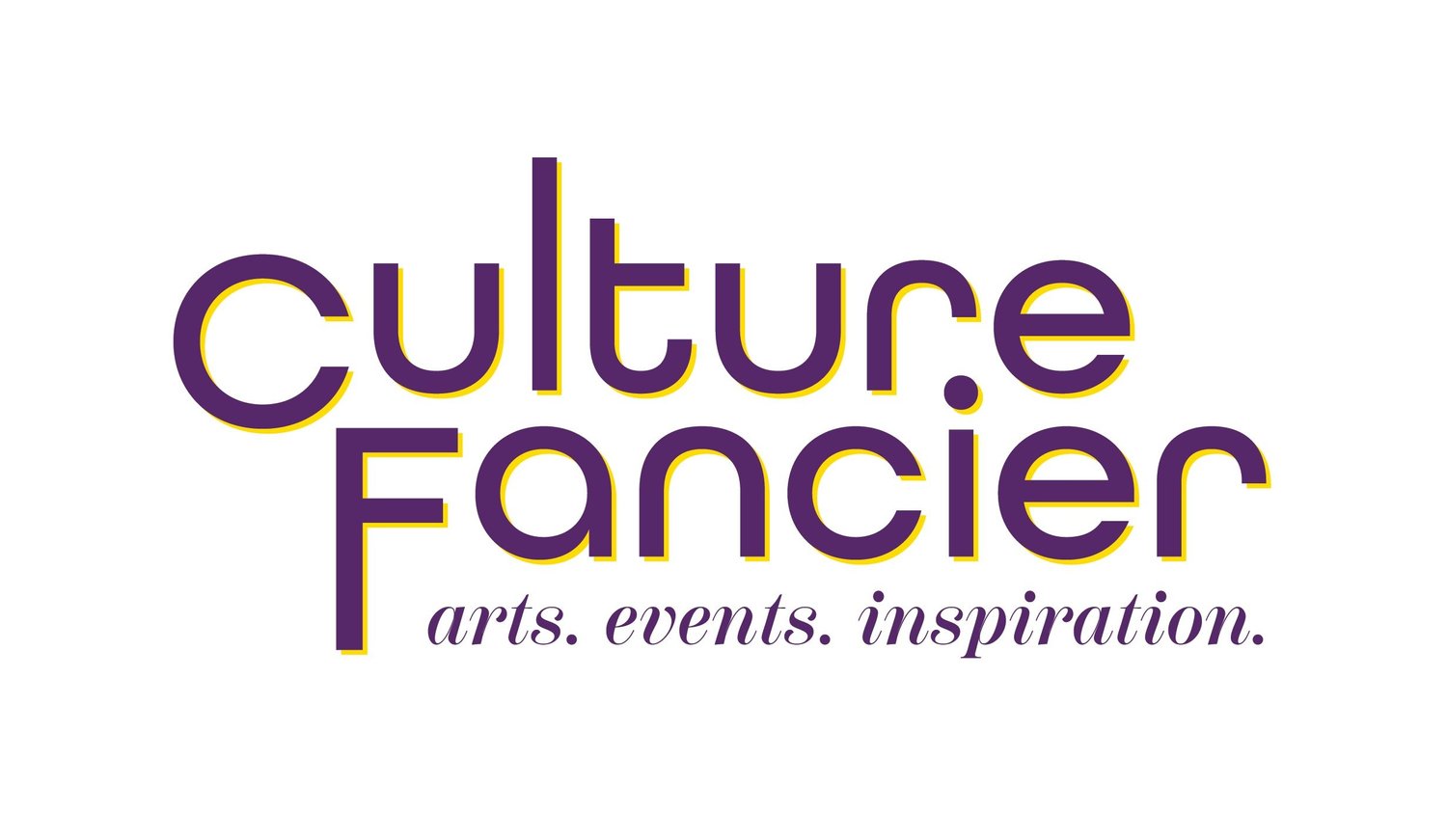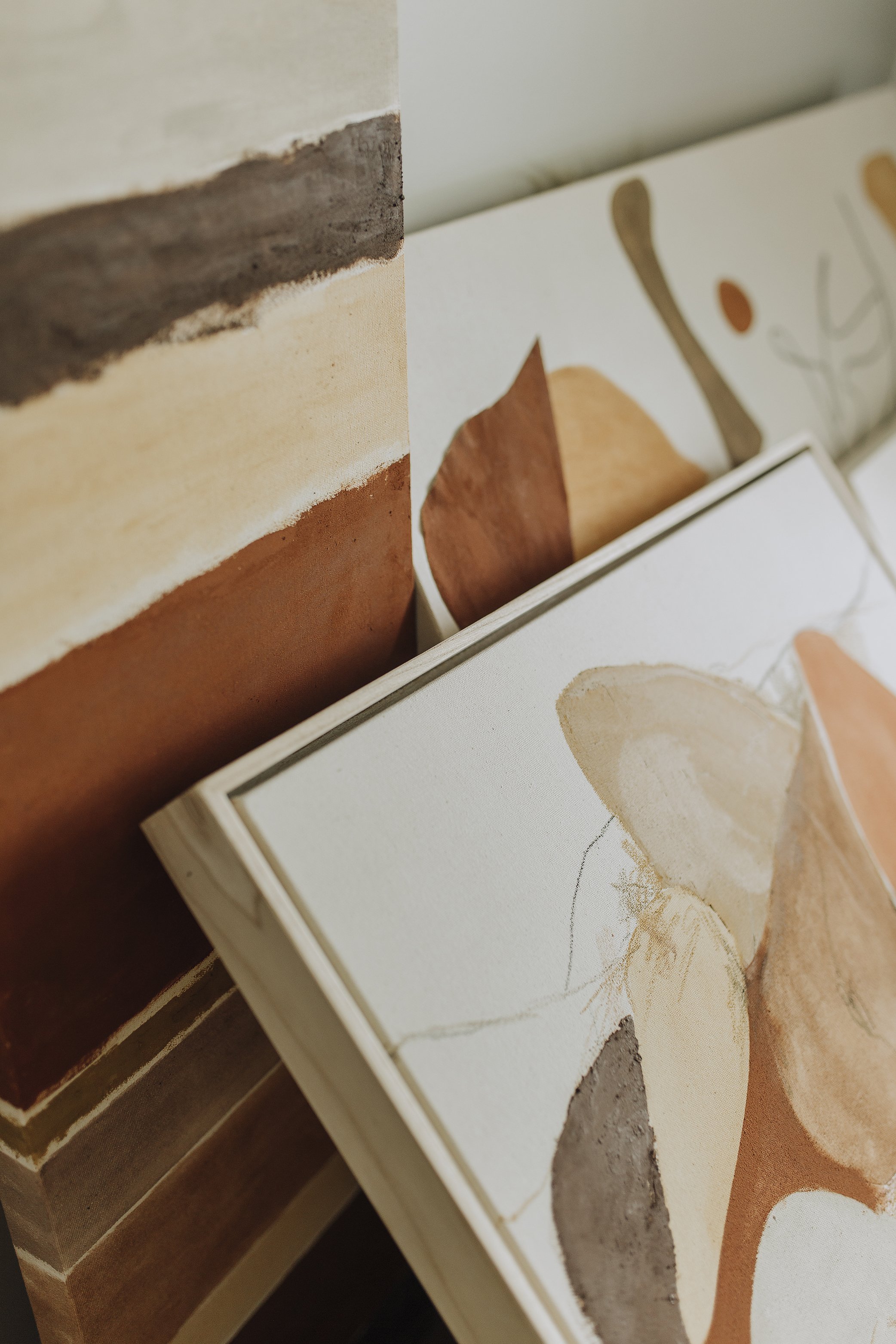Danielle Petti has a BFA from Toronto Metropolitan University (formerly Ryerson University) in Toronto, Canada and has worked as a freelance photographer for 10 years. Recently relocated to Ontario after living abroad in Italy, she found a narrower focus and direction for her artwork. She forages for rocks in nature, grinds them down into a paint, and often uses handmade papers to depict concepts inspired by motherhood, human origins, and sustainability. Grinding these minerals down into a pigment, she draws great meaning and inspiration from the felt connection to her ancestors, to the very first early modern human creators, the origins of art itself. Her work falls within categories of environmental and conceptual art, with some figurative pieces as well.
As Guest Curator at Minds Eye Studio Art Gallery and Yoga Studio, I am pleased to present Danielle’s work at the gallery this month. Origins is a collection of original works created between 2020 and 2022. Her work plays with ideas of interconnection between us and the planet’s matter; communicating that the rocks are our ancestors, our landlords, and our descendants. Keeping our human origins in mind, she explores the state of the human race in respect to environmental issues and where we can go from here, with optimism and pessimism. The natural, sustainable medium brings the work together stylistically and conceptually but with many nuances to be discovered.
Origins is on view for the month of June. Private viewings are available and the artist reception will be held on Friday June 24th, 154 Victoria St. S. Studio#7, Kitchener at 7:30 pm.
“Art is in our origins - I think that’s beautiful, and I hope viewers do too.”
Detail shot of artworks from the Origins exhibition. Photo by: Danielle Petti
What caused you to narrow your artistic focus?
As a career photographer, I really began to miss working with my hands and it was a deeper connection to my medium that I was missing. Making something from whatever I had lying around the house was how I used to create as a kid, and I think the way I work now; crushing rocks, playing with mud, etc, is very grounding and primal. But it was also my interest in sustainable solutions that motivated me to create art without buying too many new products - making handmade recycled paper and sourcing colour in nature.
What was the first piece you made from foraged materials?
A little abstract mountainscape with avocado skin ink. It actually began in my kitchen while I was living in Italy. I realized that some food scraps can be used for colour, and from there I did a lot of research and testing in my watercolour sketchbooks - mostly with inks made from stuff I already had in the house, and then I eventually moved on to foraged berries, flowers, and other botanical sources. Mineral pigments from rocks came later.
When you are creating a piece do you plan it out ahead of time or do you ever create without a plan?
It’s definitely a little bit of both. I draw a lot of inspiration for my concepts from things I learn in books/articles on anthropology, geology, astronomy - I love finding connections between us and the cosmos. But once I have a clear concept, I create intuitively, so rarely do I know exactly what the piece will look like in the end.
You’ve worked with foraged earth materials from around the world. What are the biggest differences you’ve noticed in materials from different locations?
I have an ongoing project called Pangaea: A Geological Quilt. It is a work in progress and it will probably take a few years to complete. I bring together earths from all over the world. Most earth colours can be found anywhere, however some parts of the planet have a higher concentration of iron-rich earth deposits which yield warmer, and more vibrant colours. These sites, when you find them, were most likely used historically as a source for ochre paint. So far from my experience in Ontario, a lot of searching needs to be done to find those brighter yellows and reds.
Are there some colours that are impossible to get from foraged earth materials?
Minerals that yield pigment come in a surprisingly wide range of colours but from a practical standpoint, some are impossible to forage, at least for me as an artist. I’d be surprised to find blue and purple minerals lying around. But these mineral pigments can be purchased, and maybe that will work its way into my art practice in the future. But for now, I am enjoying going right to the source and using whatever colours I happen to find, adding an element of chance into my work.
For anyone who is interested in foraging materials, what are best practices to make sure you are doing so ethically?
I would say that you need to start from a place of observation and gratitude. The land doesn’t owe you anything, and once you realize that, you can go about your practice in a way that respects the ecosystem, and respects the history in your area. Working with this specific medium, of all mediums, carries with it many stories. I like to say that we are the rocks, and we will become the rocks. Knowing this, the land is charged with all the people who came before you and foraged where you’re foraging. I keep in mind the cultures and practices that existed and continue to exist where I am now, and it is with curiosity and admiration that I am eager to learn more about this history. These are just my personal quasi-spiritual attitudes, but if you are definitely interested in foraging for colour, I would direct you to an excellent practical resource from Wild Pigment Project, where Tilke Elkins talks about reciprocal foraging.
What is your dream creative project?
Probably a collaboration with a scientist - geologist or climate scientist. I love when art and science meet. I love the interconnection between us, all other living bodies, and of course, the dirt! A dream project of mine would be to help inspire a sense of love and respect for our planet via the visuals, while being in dialogue with facts and solutions.
What do you hope people will take away from your exhibition?
I’ve asked myself what it means to be human and I think whatever that answer is, art is a fundamental part of it. Since cave and rock paintings were made thousands of years ago, we’ve continued to create and reshape the landscape for art. Art is in our origins - I think that’s beautiful, and I hope viewers do too. I’ve worked with nature instead of against it to create these works so I hope people can see the subtle nuances and beauty in the earth’s colours and perhaps contemplate a world in which we adopt the best practices to be in harmony with nature; which really means, to be in harmony with ourselves.
Some artworks from the Origins exhibition along with artist tools and materials. Photo by: Danielle Petti
On Saturday June 18th from 2-3:30 pm at Minds Eye Studio Art Gallery and Yoga Studio in Kitchener, Danielle will lead a workshop where participants will learn the process of making sustainable art; from foraging tips and crushing rocks to mixing the perfect paint. Register for the workshop here.
Follow Danielle on Instagram.
Interview by Glodeane Brown
If you liked this post please like, comment, and share.



